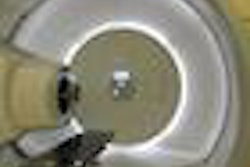The use of advanced radiation therapy technologies grew rapidly between 2004 and 2009 for treating men with prostate cancer, particularly among those who might not be at risk of dying from the disease, according to an article published in the June 26 issue of the Journal of the American Medical Association.
The study found that use of technologies such as intensity-modulated radiation therapy (IMRT) and robotic prostatectomy grew at a faster rate than more traditional techniques such as external-beam radiation therapy and open radical prostatectomy in patients who are at low risk of dying. These men might not be the best candidates for advanced forms of treatment, according to the authors (JAMA, Vol. 309:24, pp. 2587-2595).
The research group led by Dr. Bruce Jacobs at the University of Michigan examined Surveillance, Epidemiology, and End Results (SEER) Medicare data. They identified a retrospective cohort of men diagnosed with prostate cancer between 2004 and 2009 who underwent IMRT (n = 23,633), external-beam radiation therapy (n = 3,926), robotic prostatectomy (n = 5,881), open radical prostatectomy (n = 6,123), or observation (n = 16,384). Follow-up data were available through December 31, 2010.
Jacobs and colleagues found that use of advanced therapy technologies increased from 32% in 2004 to 44% in 2009 among men with low-risk disease. Among those with a high risk of noncancer mortality, use of advanced technologies grew from 36% in 2004 to 57% in 2009. Among all men considered unlikely to die from prostate cancer, use of high-end techniques grew from 13% to 24%.
IMRT and robotic prostatectomy have been adopted due to the high morbidity associated with traditional radiation and surgical techniques, as both are considered to be more targeted and less toxic, the authors noted. Clinical guidelines advocate the use of active treatment only for men with at least a 10-year life expectancy; men with low-risk disease have a greater likelihood of dying from other causes even 20 years after diagnosis.
The newer technologies are expensive, with startup costs that reach $2 million, while IMRT is contributing an additional $1.4 billion in spending annually. The authors recommend research efforts to differentiate indolent from aggressive disease, enabling healthcare providers to target therapies most appropriately.



















